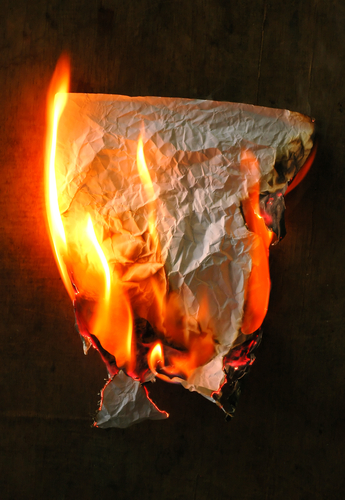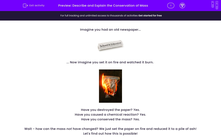Imagine you had an old newspaper...

... Now imagine you set it on fire and watched it burn.

Have you destroyed the paper? Yes.
Have you caused a chemical reaction? Yes.
Have you conserved the mass? Yes.
Wait - how can the mass not have changed? We just set the paper on fire and reduced it to a pile of ash! Let's find out how this is possible!
What is mass?
Mass tells us how much matter is contained inside a substance. It is not the same as weight, which is a force measured in Newtons and depends on the strength of gravity.
Mass on its own has nothing to do with gravity - it is not a force, and it is measured in kilograms (or grams). The only thing that an object's mass depends on is how many particles are contained inside it.
Conservation of mass
Mass is always conserved. This means that in any chemical reaction or any physical process, the total mass at the start will equal the total mass at the end. For example, if 100 grams of ice is melted, it will turn into 100 grams of water. This is a change of state and is a physical reaction.
Even in a chemical reaction, where a total 100 grams of different substances were mixed together, it would still make a total of 100 grams of new substances. Ultimately, you cannot create or destroy mass because you cannot create or destroy particles.
.jpg)
So, even if you set something on fire, this is a chemical reaction where you are just making it react with oxygen. In doing so, you are making new molecules from that original object.
Taking the burning newspaper as an example, if you could examine the elements that paper is made of, you would find that it is made of hydrogen, oxygen, and carbon. Burning it would make smoke and ash (which are made of carbon), along with carbon dioxide, and other molecules containing hydrogen, oxygen, and/or carbon. Notice that the elements themselves do not change.
Furthermore, if you added up the total masses of the smoke, carbon dioxide, and pile of ash after it finished burning, it would be the same as the mass of the original newspaper before it was set on fire.
This is why mass is conserved - no matter what the process!
Let's have a go at some questions now. If you need to check back to this page, just click on the red help button on the screen at any point.








